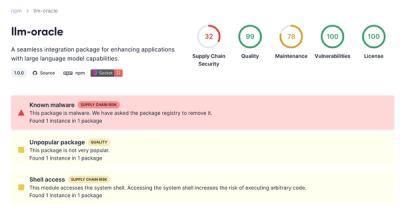iterm2browser
iterm2browser is a command line tool to convert iterm color schemes to styles you can use in the browser. It outputs css, json, and less variables.
There are 2 types of css output. The first is formatted to be used with ansi_up. The second is formatted to be used with term.js / tty.js
iterm2browser is basically a wrapper around iterm-colors that outputs to template files.
You can find some converted styles here with a demo of them in action.
Install
npm install -g iterm2browser
Usage
Usage: iterm2browser <command> [options] <file/URL> <output>
Options:
-h, --help output usage information
-V, --version output the version number
-p, --prefix [name] Add a prefix to the output
-a, --append Append to output file
Commands:
css Convert to css
termjs Convert to term.js compatible css
json Convert to a json representation
less Convert to less variables
The prefix command is useful for adding css classes to styles. See output format below.
The append flag will append styles to the output file. Without, it will write over the output file.
Examples
iterm2browser css cobalt2.itermcolors cobalt2.css
iterm2browser css --append ir_black.itermcolors styles.css
iterm2browser less http://github.com/that/style/there that.less
Output Formats
CSS Output
Provides these styles:
.fg.bg::selection.ansi-{color}-fg, .ansi-{color}-bg, .ansi-bright-{color}-fg, and .ansi-bright-{color}-bg for black, red, green, yellow, blue, magenta, cyan, and white
Prefixes are applied this pattern: {{ prefix }} .fg
So iterm2browser css --prefix=".cobalt2" cobalt2.itermcolors cobalt2.css would output: .cobalt2 .fg {...}
Termjs Output
You can set termjs colors when you start a terminal with json, but how do you change it on the fly, whenever you want? Nasty hacks, thats how. Termjs css output looks like this:
{{ prefix }} span[style*=";color:#eeeeec;"] {color: {{ theme_color }} !important;}
It works by overriding the default inline styles termjs sets for fg and bg colors. Nasty. It also provides .fg and .bg like the normal css output.
JSON Output
Follows this pattern (without the outer prefix level if it is omitted):
{
"{{prefix}}": {
"fg": "{{ c.foreground }}",
"bg": "{{ c.background }}",
"black": "{{ c.palette.0 }}",
"red": "{{ c.palette.1 }}",
"green": "{{ c.palette.2 }}",
"yellow": "{{ c.palette.3 }}",
"blue": "{{ c.palette.4 }}",
"magenta": "{{ c.palette.5 }}",
"cyan": "{{ c.palette.6 }}",
"white": "{{ c.palette.7 }}",
"brightBlack": "{{ c.palette.8 }}",
"brightRed": "{{ c.palette.9 }}",
"brightGreen": "{{ c.palette.10 }}",
"brightYellow": "{{ c.palette.11 }}",
"brightBlue": "{{ c.palette.12 }}",
"brightMagenta": "{{ c.palette.13 }}",
"brightCyan": "{{ c.palette.14 }}",
"brightWhite": "{{ c.palette.15 }}"
}
}
LESS Output
Outputs color variables you can use elsewhere.
Follows this format: @{{prefix}}brightRed using the same variable names as the JSON output.
Custom Formats
If you want to add or change a format, you can add or edit a .mustache template in lib/templates. Compile the template with the Hogan's hulk command:
hulk *.mustache > compiled.js
If your template was named mine.mustache, you would then run iterm2browser with the mine command:
iterm2browser mine cobalt2.itermcolors cobalt2.css
License
The MIT License (MIT)
Copyright (c) 2015 Sterling DeMille <sterlingdemille@gmail.com>
Permission is hereby granted, free of charge, to any person obtaining a copy of
this software and associated documentation files (the "Software"), to deal in
the Software without restriction, including without limitation the rights to
use, copy, modify, merge, publish, distribute, sublicense, and/or sell copies of
the Software, and to permit persons to whom the Software is furnished to do so,
subject to the following conditions:
The above copyright notice and this permission notice shall be included in all
copies or substantial portions of the Software.
THE SOFTWARE IS PROVIDED "AS IS", WITHOUT WARRANTY OF ANY KIND, EXPRESS OR
IMPLIED, INCLUDING BUT NOT LIMITED TO THE WARRANTIES OF MERCHANTABILITY, FITNESS
FOR A PARTICULAR PURPOSE AND NONINFRINGEMENT. IN NO EVENT SHALL THE AUTHORS OR
COPYRIGHT HOLDERS BE LIABLE FOR ANY CLAIM, DAMAGES OR OTHER LIABILITY, WHETHER
IN AN ACTION OF CONTRACT, TORT OR OTHERWISE, ARISING FROM, OUT OF OR IN
CONNECTION WITH THE SOFTWARE OR THE USE OR OTHER DEALINGS IN THE SOFTWARE.



